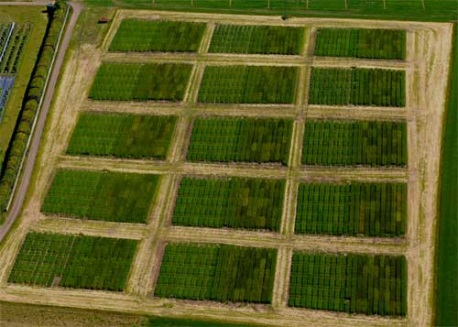Mixtures of several current recommended varieties of barley, particularly winter types, can be used to partially control many pathogens, particularly splash-dispersed pathogens such as R. commune (causing rhynchosporium or scald), as a control measure in their own right. However, in simple mixtures of two or three components, especially in spring barley, they are insufficiently effective and are best used in conjunction with other measures.
 Benefits to yield, quality and stability are derived from mixtures in addition to disease control. Decreased infection is correlated with increased component number and trait diversity, and they can be deployed most effectively in irregular patches thereby removing the need for homogeneous pre-mixing.
Benefits to yield, quality and stability are derived from mixtures in addition to disease control. Decreased infection is correlated with increased component number and trait diversity, and they can be deployed most effectively in irregular patches thereby removing the need for homogeneous pre-mixing.
The success of mixtures of cultivars expressing major genes for resistance is dependent on a pathogen population where a substantial proportion does not express virulence matching all the host resistance genes. Even then, mixtures will tend to select for complex isolates which overcome all the resistance genes.
If the population comprises few genotypes or only simple genotypes, then, provided these do not include virulence towards all the resistance components in the mixture, disease reduction is likely to be highly effective. However, if the population is highly heterogeneous and complex isolates occur, a little disease reduction may occur early in the epidemic but is likely to be eroded as complex pathotypes virulent on all components, are selected.
Cereal-legume mixtures can be a very resource-efficient way of producing biomass for silage or Anaerobic Digestion (AD), again exploiting contrasting trait complementarity. Carefully-matched combinations can be harvested for grain and beans / peas at maturity too.
Cereal variety mixtures are a tool in the Cereals IPM Toolbox.
Contact Adrian Newton for further information.
